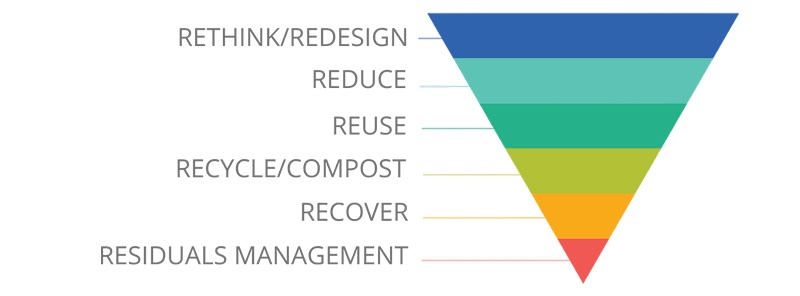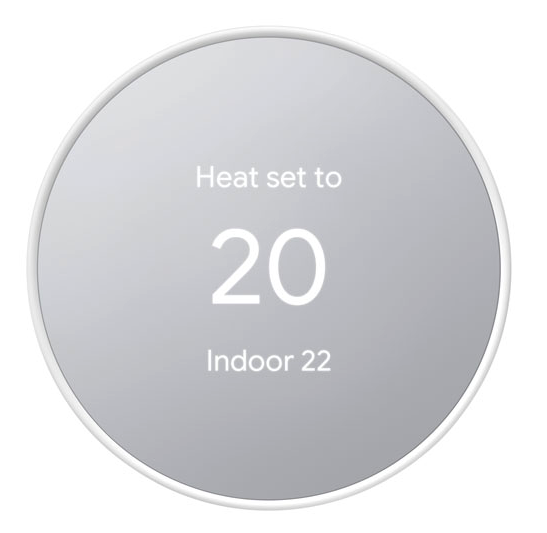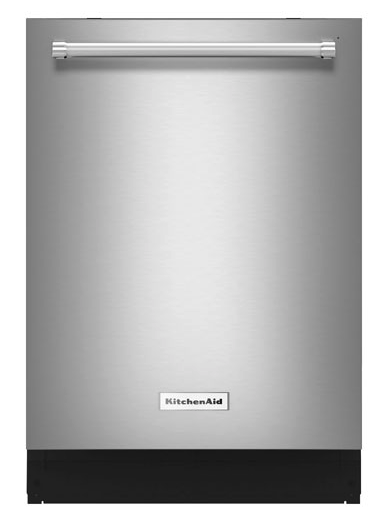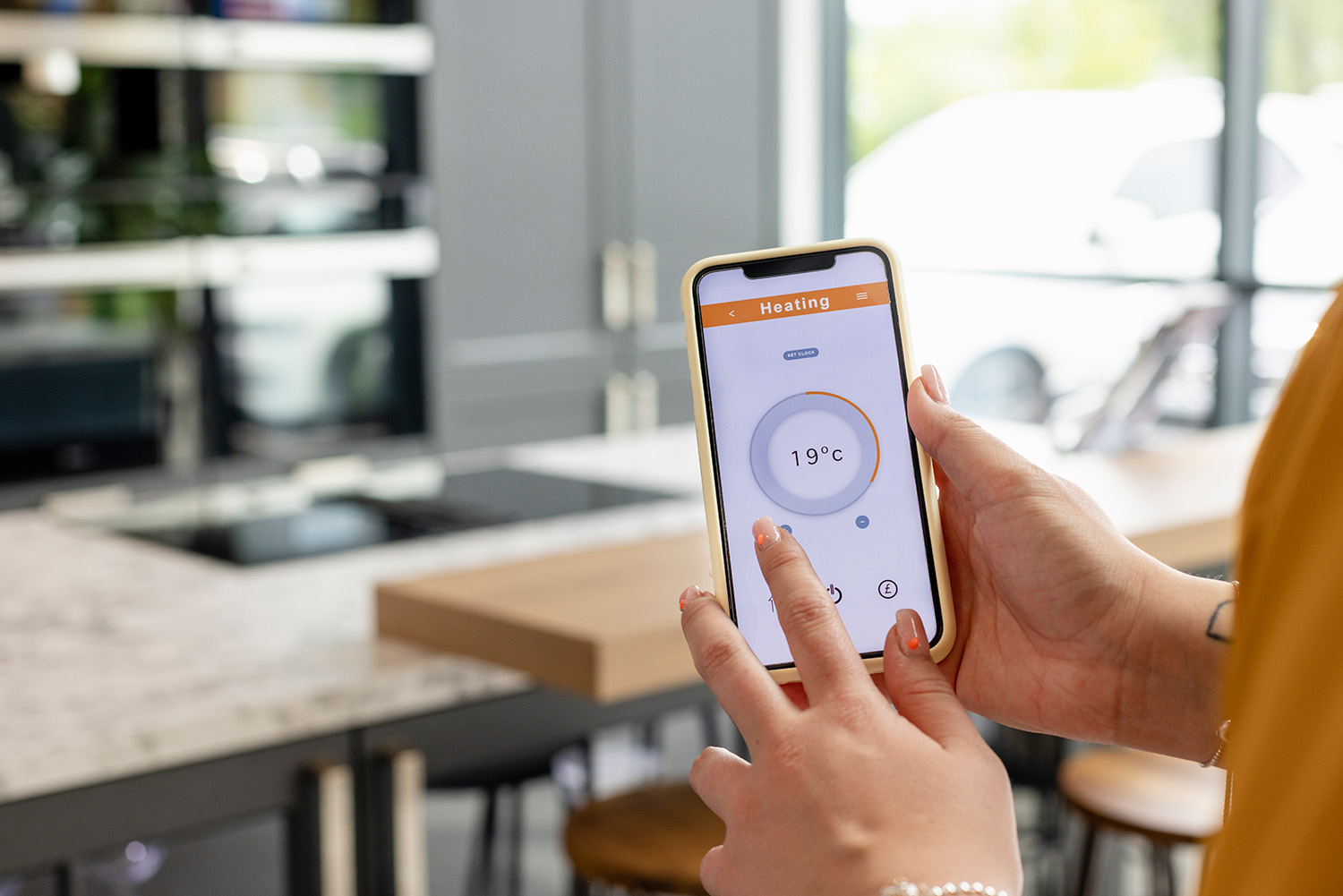
Bringing your old electronics to a Best Buy store for recycling and purchasing returned products in like-new condition at a discount such as open box products (some are certified by Geek Squad and come in the original packaging and a 1-year warranty), or pre-loved refurbished devices are just examples of the many steps you can take toward a more sustainable lifestyle.
When I was growing up, waste prevention was all about the three R’s: Reduce, Reuse, and Recycle. They used to be featured as three arrows that all feed into each other; each one equal to the rest. Today’s tips are more complicated, but they also give you a lot more options for how you can live a more sustainable lifestyle.
It wasn’t until I was older that I learned that waste reduction methods are a hierarchy, not a circle. We need to focus first on things like redesigning and reducing. What can we choose not to buy; what can we repair instead of replace? Only after we look at reduction methods is it time to look at the other R’s.
How “reducing” works
Instead of three things that are about equal, the R’s of waste prevention are things that can be done in order. For instance, whenever possible, we can ask ourselves how we can reduce the number of things that we purchase overall. Then, we can ask ourselves how we can reuse what we already have. Once we’ve exhausted higher-level options, then it’s time to look at how we can recycle what we’re getting rid of.
The easiest way to create a more sustainable future for our homes is to simply buy less things—which is a lot simpler than it seems. I like to start by looking toward the community; then, by looking at things based on their repairability. If there’s something that I would only ever use twice a year, maybe it’s something that I could buy with a friend and share between the two of us. If it’s something I need for a one-off project, perhaps someone in my community could lend me their old one! And, if it’s something that I think is likely to break with time (for instance, a vacuum), I look to brands like Dyson, who sell replacement parts for their products so you can repair them.
Reducing what you buy can be as simple as going with an easily-expandable modular furniture set or decorating with items that you already own—like your favourite record sleeves, or a classic guitar.
Reuse what we already have
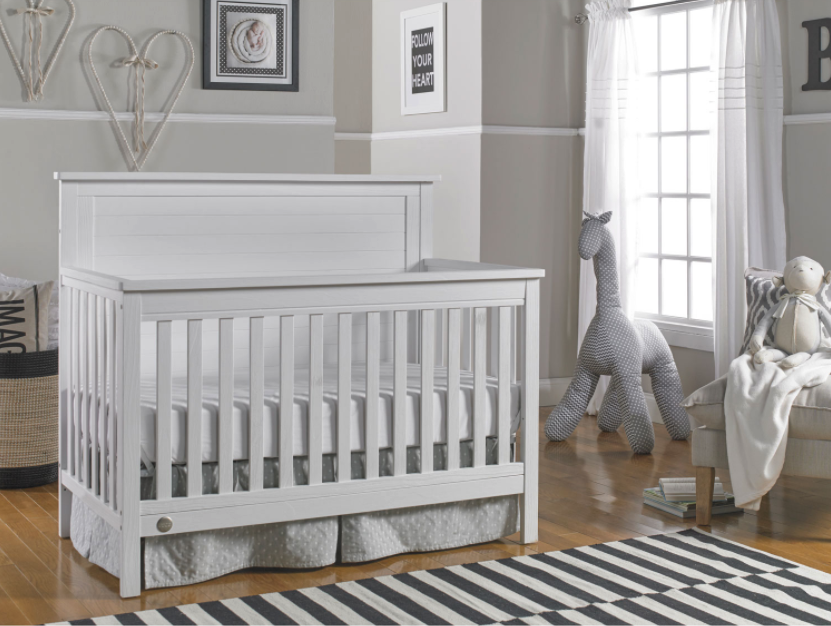
Just like reducing, reusing is something that’s pretty easy to do here and there around the home. These two lifestyle tips often go hand in hand, because reusing something we already own means that we’re reducing our overall carbon footprint!
Convertible cribs are a great example of an item that was designed to be reused. They convert from a crib to a daybed, then to a toddler bed (with a partial railing), then a daybed, and finally, a full bed. This makes reducing how much furniture you’ll need for one child simple, because the same item can be used throughout different life stages. Sleeper furniture is another example. Futons and sofa beds can be used as a couch but also transform into a daybed or full bed when you have guests over.
Reusing items can be just as easy in other parts of the home. Old pasta sauce jars are great for canning and pickling in the kitchen. Empty egg cartons can be dropped off at your local food bank, so they can use them to repackage eggs they’ve purchased in bulk. Old yogurt containers are perfect for sending home leftovers with friends, or for mixing paints and other craft items, and brown shipping paper is a great glass cleaner. (It also creates a charmingly classic look when used for holiday wrapping!) You can even use old toothbrushes to clean under your nails after gardening, or to scrub mushrooms during dinner prep.
The process of reusing things gives us lots of space to get creative, and every little bit helps.
Save energy with smart home devices
When you do need to purchase a new item, there are plenty of smart home devices that’ll help cutting down on waste easy. Intelligent design creates appliances that use less energy when they’re on, but it can create less “on” time for things, too.
Canada’s switch from tungsten to LED bulbs is a great example of this: a simple change that means we’re all using significantly less energy every day, while living our lives as normal. Smart lights are the next step up. They consume less energy than a tungsten bulb, and they also make it easy to turn lights on and off based on need.
Smart home solutions with Google
You can get similar eco-friendly benefits from other smart home devices, like the Nest thermostat. This smart thermostat helps you create and customize a schedule to save energy while the house is empty, and its Savings Finder will look for even more ways for you to save energy as you use your Nest.
The Nest Thermostat uses sensors for motion, temperature, humidity, and ambient lighting to help automate your home. Its smart system integrates into your home and HVAC system, keeping your family healthy with push notifications whenever it senses a problem with your HVAC.
Other products that integrate into the Nest system, like the Google Nest Audio, are designed for sustainability from the start. The Nest Audio is made from a 70% recycled plastic enclosure, and its soft edges and resilient outer shell mean that you’ll be able to keep the same design for years to come. (No need to switch it out for an edge-free model if you or a family member is expecting a younger addition in the future!)
ENERGY STAR certified home appliances
The Nest Thermostat isn’t the only home appliance that’s smart enough to minimize your energy usage. ENERGY STAR® is a well-recognized symbol for energy efficient products, and it makes choosing energy saving solutions easy. Its regulations mean that any ENERGY STAR certified appliance meets the company’s specifications; usually using about 15% less energy than the minimum federal efficiency standard.
There are many ENERGY STAR certified products, but for home use, they’re most common to see in major appliances. While we often think that it’s easier on the environment to wash everything by hand, running a full load of dishes at once can actually save water. ENERGY STAR certified dishwashers can save about 3,850 gallons of water over its lifetime. Skipping a pre-rinse in the sink and letting your dishes air dry helps save even more water and energy.
Live a greener lifestyle with plants at home
One final way to “go green” is to quite literally add some greenery to your home. Keeping lots of healthy plants around is a great way to improve your air quality.
Shade-friendly, broad-leafed plants are perfect for bedrooms, where they’ll help minimize the amount of carbon dioxide in your room at night. Herbs and other edible plants are ideal for the kitchen. They’ll help clean the air all day long, supporting your family’s healthy lifestyle without the expense or hassle of a store-bought air purifier.
And, of course, when buying new tech at Best Buy, bring your old tech with you to drop off at the Best Buy store for recycling.


